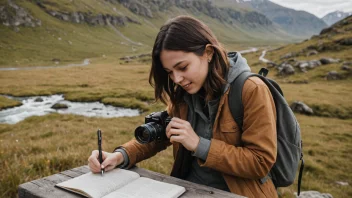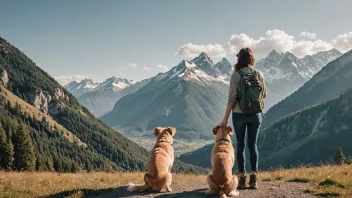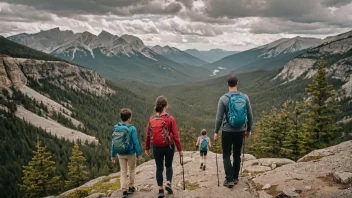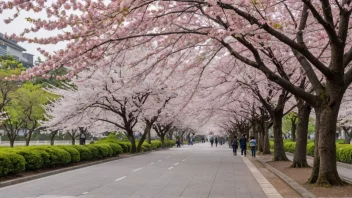In this fictional interview, we explore the breathtaking geothermal features of Yellowstone National Park with our expert, Dr. Sarah McKinley, a renowned geologist specializing in volcanic activity and geothermal phenomena. While Dr. McKinley is a creation of our imagination, her insights help us understand the unique geological formations that make Yellowstone a must-visit destination for travelers and nature enthusiasts alike.
Question 1: What makes Yellowstone's geothermal features so unique?
Dr. McKinley: Yellowstone is home to over half of the world's active geothermal features, which makes it a geological wonderland. The park sits atop a massive supervolcano, which is responsible for its incredible geysers, hot springs, and fumaroles. What makes these features unique is not just their prevalence but also their variety. You can find everything from the iconic Old Faithful geyser, which erupts regularly, to the stunningly colored Grand Prismatic Spring, which is famous for its vibrant hues caused by heat-loving bacteria.
Question 2: Can you explain how the geothermal features are formed?
Dr. McKinley: Certainly! The geothermal features in Yellowstone are primarily driven by the heat from the underlying magma reservoir. As groundwater seeps down through cracks in the Earth's crust, it is heated by the magma and can either rise back to the surface or become trapped, forming pressure that eventually leads to eruptions. Geysers erupt when this pressure is released, while hot springs occur when water is heated but not pressurized enough to erupt. The interaction of water, heat, and minerals creates the colorful thermal pools we see today.
Question 3: What are some tips for visitors who want to experience these features?
Dr. McKinley: First and foremost, I recommend that visitors always stay on marked trails and boardwalks. The ground around these geothermal areas can be fragile and extremely hot, posing risks for those who wander off the beaten path. Additionally, visiting early in the morning or later in the day can help you avoid crowds and provide better light for photography. Don't forget to bring a camera! The colors and formations are breathtaking, especially at sunrise or sunset.
Question 4: Are there any lesser-known geothermal features that travelers should explore?
Dr. McKinley: Absolutely! While sites like Old Faithful are famous, I highly recommend visiting Norris Geyser Basin. It’s the hottest and most changeable thermal area in the park and features a variety of geysers and hot springs that are often less crowded. Another hidden gem is the West Thumb Geyser Basin, which offers stunning views of the lake paired with unique geothermal features. Exploring these lesser-known areas can provide a more intimate experience with Yellowstone's geothermal wonders.
Question 5: What role do these geothermal features play in the ecosystem?
Dr. McKinley: The geothermal features of Yellowstone are essential not only for geological study but also for the ecosystem. They provide unique habitats for various organisms, including thermophilic bacteria that thrive in extreme conditions. These organisms form the basis of a unique food web that supports a variety of wildlife in the park. The hot springs and geysers also influence the local climate and soil composition, creating diverse ecosystems.
Question 6: What is the future of Yellowstone's geothermal features?
Dr. McKinley: The geothermal features in Yellowstone are dynamic and will continue to evolve. With ongoing volcanic activity, we may see changes in geyser eruption patterns and the formation of new thermal features. It's crucial for visitors to understand the importance of preservation and responsible tourism. By protecting these areas, we can ensure that future generations will also be able to witness the beauty and wonder of Yellowstone's geothermal landscape.
In conclusion, while Dr. Sarah McKinley is a fictional character, her insights reflect the awe-inspiring nature of Yellowstone's geothermal features. From their unique formation to their role in the ecosystem, these wonders are a testament to the Earth's dynamic processes. For any traveler, experiencing these geothermal phenomena is not just a visit; it's an exploration of the planet's powerful natural forces. As you plan your trip to Yellowstone, remember to respect these incredible features and enjoy the breathtaking beauty they have to offer.






